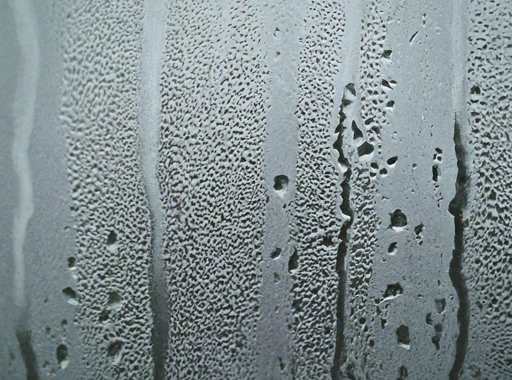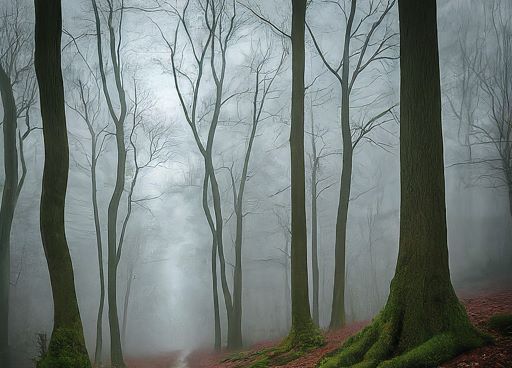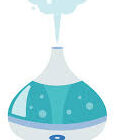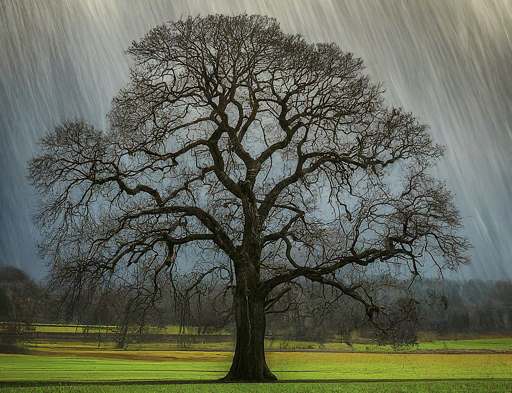Will It Always Rain when Humidity is 100 Percent? Not Guaranteed!
It is possible to have 100 percent humidity and not have rain. It all comes down to the dewpoint and the air temperature difference. If there is 100% humidity and the air temperature stays above the dewpoint temperature, there will not be rain.
100 percent humidity means the air is completely saturated. Or does it? Well, the simple explanation is that at this high humidity level, the air is holding moisture to its full capacity at that temperature.
When you step outside on such a day, you will feel quite muggy, with the damp air clinging to your skin like a wet blanket.
Therefore, you might wonder whether this is guaranteed to turn into a downpour.
As far as rain and humidity are concerned, 100% humidity doesn’t automatically translate to raindrops falling. Quite a few other things have to come to play, to make it rain.
Understanding the humidity connection to rainfall

To understand high or low humidity, think of the air as a sponge. Now, the more water vapor it holds, the higher the humidity.
When this sponge (air) is filled to the brim (meaning 100% humidity) and gets squeezed (due to temperature changes or air pressure shifts), water vapor condenses into tiny droplets, forming clouds and potentially leading to rain.
But there’s more to the story than just a saturated sponge!
Will it rain when the humidity is 100%?
Not necessarily! Here’s the key: 100% humidity refers to the relative humidity, which is the amount of water vapor present in the air compared to what it can hold at that specific temperature.
So, even at 100% relative humidity, the air might not be holding enough total water vapor to trigger rain, especially if the temperature is high. As you can remember, there is a relationship between temperature and humidity.
For rain to fall, it takes more than just the humidity level. For instance, the temperature must be right, and other factors such as air pressure also come in.
Something to remember is that when the humidity in the clouds is 100%, rain will fall, and the air below will have lower humidity.
Think of it like a small, full sponge versus a large, full sponge—both are saturated, but only the larger one holds enough water to potentially drip.
100% humidity inside vs. outside
In another article on: Is 70 percent humidity high outside or inside? We said that this can be high indoors. Now, you can imagine how much higher and irritating 100% humidity is.
Humidity levels can differ significantly between indoors and outdoors. Our homes, with air conditioning and heating running, often have lower humidity than the outside environment. Therefore, reaching 100% inside is less common and might require specific humidifiers.
You also need to remember that outdoor humidity affects indoor humidity levels. So, you need to seal your house properly so that it can keep the more humid air outside.
The same way we said you should run an air purifier with the windows closed is the same way that you should close the windows when running a dehumidifier.
What 100% humidity feels like: Sticky!
When the humidity is high, you feel so uncomfortable, damp, and sticky. There are many high-humidity health effects. There are some reasons for this!
Humid air always feels warmer, so it tricks your body into thinking that it is overheating. To counter this feeling, the body tries to cool itself down, by producing sweat.
However, the sweat does not evaporate since the surrounding air is already saturated with moisture. Therefore, it sticks to the skin, making you feel uncomfortable and irritated. If you have tiny tears in the skin, you will feel itchy and painful as the salt in the sweat gets in.
This is why high humidity days can be so uncomfortable, even at moderate temperatures.
Does 100% humidity cause fog? Not always

While both involve saturated air, fog and 100% humidity aren’t identical twins. Fog forms when cool air comes into contact with a warm, saturated surface, causing water vapor to condense into visible droplets near the ground. So, 100% humidity can contribute to fog formation, but it’s not always a guarantee.
In most cases, humidity above 70 percent can cause mist if the temperature is okay. When the humidity gets close to 100 percent and the air temperature falls, chances of a mist forming are going to be high.
The difference between the air temperature and the dewpoint temperature determines fog formation.
In this case, air temperature means the actual air temperature when you measure it with a thermometer.
The dewpoint temperature is the temperature at which the air becomes saturated with moisture.
Thus, if the difference between the air temperature and the dewpoint temperature is lower than 4.5 °F, fog will start to form.
Is 100% humidity dangerous?
Generally, no. However, for people with respiratory conditions like asthma, high humidity can make the symptoms worse.
Additionally, very high humidity combined with high temperatures can create dangerous heat index values, posing a risk of heatstroke.
If you check the humidistat, and it shows there will be high dewpoint, dress appropriately when going outside. Also, do not over-exert yourself with physical exercise.
Conclusion
Understanding the behavior of humidity goes beyond a simple rain prediction. It’s about the interaction of temperature, air pressure, and the air’s capacity to hold water vapor.
While 100% relative humidity doesn’t guarantee rain, it provides valuable insight into the atmosphere and its potential impact on our comfort and health.
The next time you step outside on a steamy day, remember: the air might be saturated, but rain isn’t always in the forecast!
Something to remember: If the humidity is 100 percent, the air temperature is lower than the dewpoint temperature, rain will fall. If none of these conditions is met, high humidity will not translate to rain.

